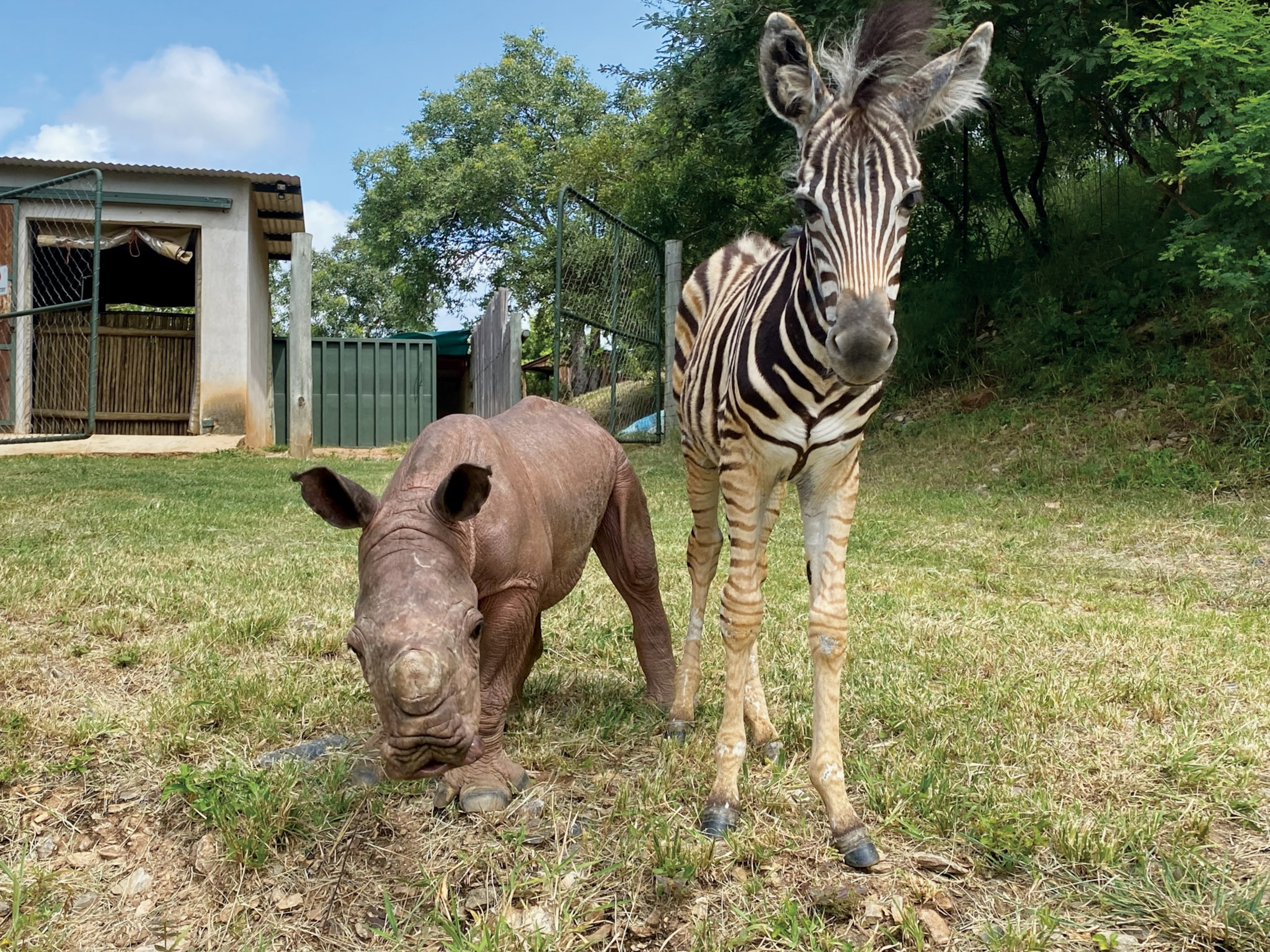
Death of Rare White Rhino Leaves 5 in the World
Breeding northern white rhinos with their cousins may help preserve their genes, scientists say.
When an elderly northern white rhinoceros died Sunday at the San Diego Zoo, he left behind just five of his kind on Earth. As for the chances of any more being born, scientists say, there is limited hope.
The rhino, named Angalifu, was 44 years old and under veterinary care for a variety of ailments at the San Diego Zoo Safari Park, mammal curator Randy Rieches said in a statement. The death, he added, "is a tremendous loss to all of us."
The remaining animals, all captive, include a female at the San Diego Zoo, a female in a zoo in the Czech Republic, and two females and a male at Kenya's Ol Pejeta Conservancy, which is part of a last-ditch effort to breed the extremely rare subspecies.
In October, a 34-year-old male, Suni, died at the Ol Pejeta Conservancy, which has not been successful in breeding the remaining animals. Suni was one of just two breeding males left, a count that did not include Angalifu, since he was unable to breed. (Related: "Czech Zoo Sends Four Rare White Rhinos to Kenya.")
The southern white rhino, a related subspecies, is considered near-threatened by the International Union for Conservation of Nature, but lately has rebounded to about 20,000 individuals, according to the nonprofit group WWF. Many rhinos have declined in recent decades due to poaching caused by demand for their horn, which people in Asia use for traditional medicine. (See "1,000+ Rhinos Poached in 2013: Highest in Modern History.")
Since Angalifu was old and not breeding, "I wouldn't say the [northern white] subspecies is closer to extinction as a result of this death, but it's in dire shape, and it has been for a long time," said Matthew Lewis, senior program officer for African species conservation at the WWF.
"The only chance we're going to have full northern white offspring is artificial insemination," said Lewis. But so far, this method has proved to be very difficult in rhinos.
The San Diego Zoo has preserved semen and testicular tissue from Angalifu, "with the hope that new reproductive technologies will allow recovery of the species," according to the statement.
In general, all species of rhinos breed well in the wild but not in captivity—as is the case at Ol Pejeta Conservancy.
Interbreeding to Save Genes
But there is another option, Lewis noted: breeding the remaining northern white females in Kenya with southern white rhino males.
Though the pure northern white subspecies would be lost, this approach would preserve some of the northern white's genetic material in the offspring—which is better than nothing. (Read "Rhino Wars" in National Geographic magazine.)
Lewis suspects that the northern white/southern white offspring would have no trouble adjusting to life in the wild, in part because rhinos are generally adaptable when they're reintroduced.
Northern white rhinos have been "absent from the wild for a number of years, and having them back would be good for the ecosystem," he added.
Indeed, rhinoceroses are key to keeping grasslands healthy, as they eat—and keep in check—particular species of savanna plants.
The Ol Pejeta Conservancy has already embarked on this strategy, which they call Plan B. Earlier this year, conservationists introduced a "fine and fertile" southern white male from the neighboring Lewa Wildlife Conservancy to the northern white females' enclosure.
Though the females haven't gotten pregnant yet, in March the conservancy said that the male is interested in one of the females, and that "partial mating" had occurred.
"Although these animals will not be 100 [percent] northern white rhinos, they will be conserving the important locally adapted genes for the habitats and environment that the northern white rhino was adapted for and evolved within," the Ol Pejeta Conservancy said in a statement.
"Victim of Evolution"
Lewis pointed out in a previous interview that the northern white rhinoceros is a "victim of evolution"—it was a remnant population cut off from the southern white rhinoceros by the Great Rift Valley and the dense forests of Central Africa.
Already isolated and occurring in low numbers, the northern subspecies got caught up in political turmoil in Sudan, the Central African Republic, the Democratic Republic of the Congo, and Uganda, and its numbers quickly dwindled because of poaching and habitat loss. (Related: "Why African Rhinos Are Facing a Crisis.")
Whatever happens to the northern white rhinoceros, conservationists should avoid letting the captive population of any species get so small, Lewis said.
It's the "worst-case scenario," he said, and "a fantastic lesson on what not to do."





